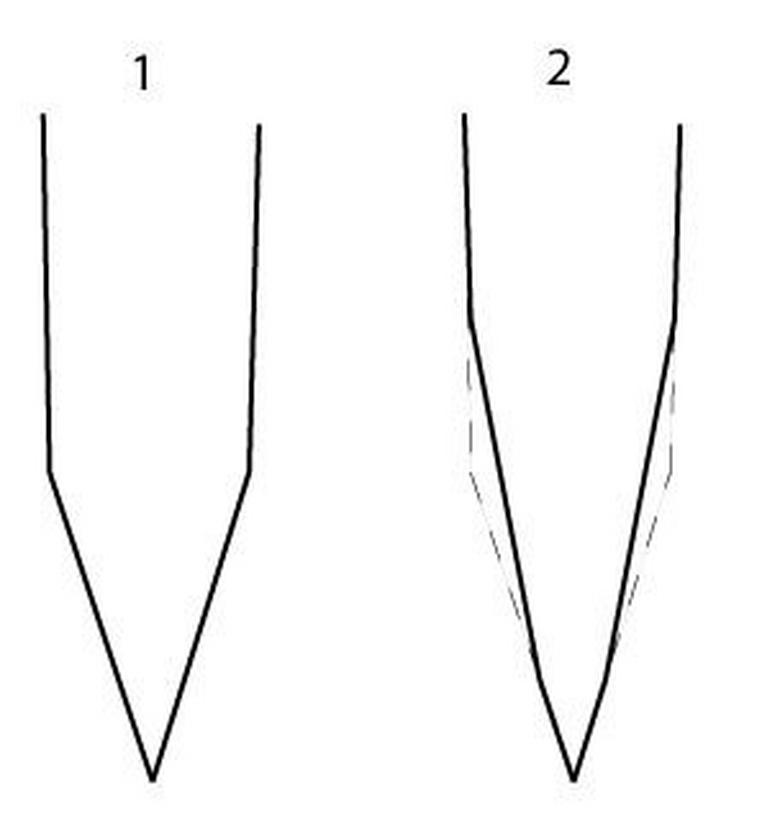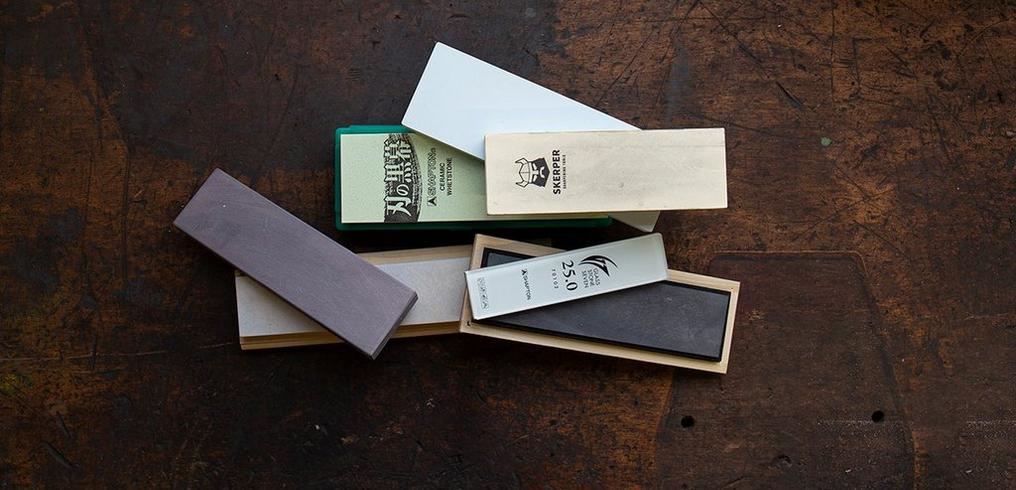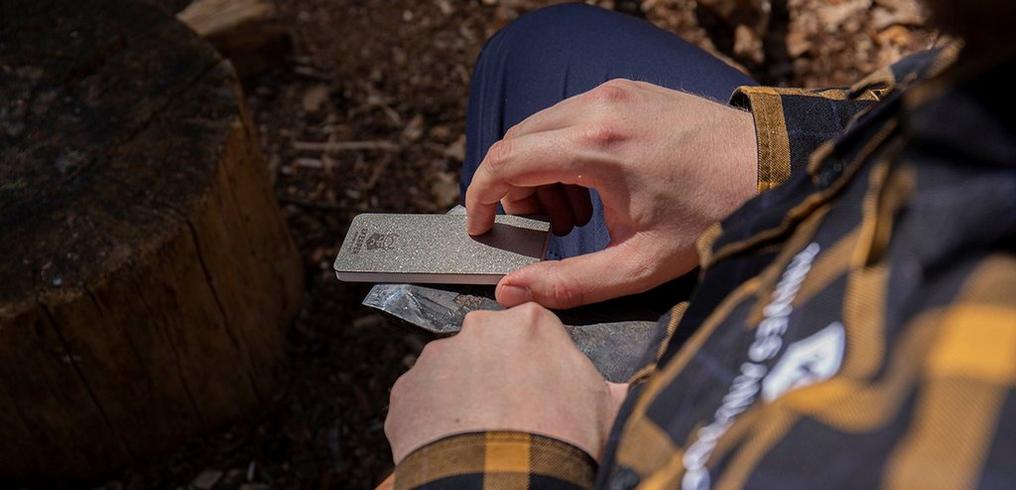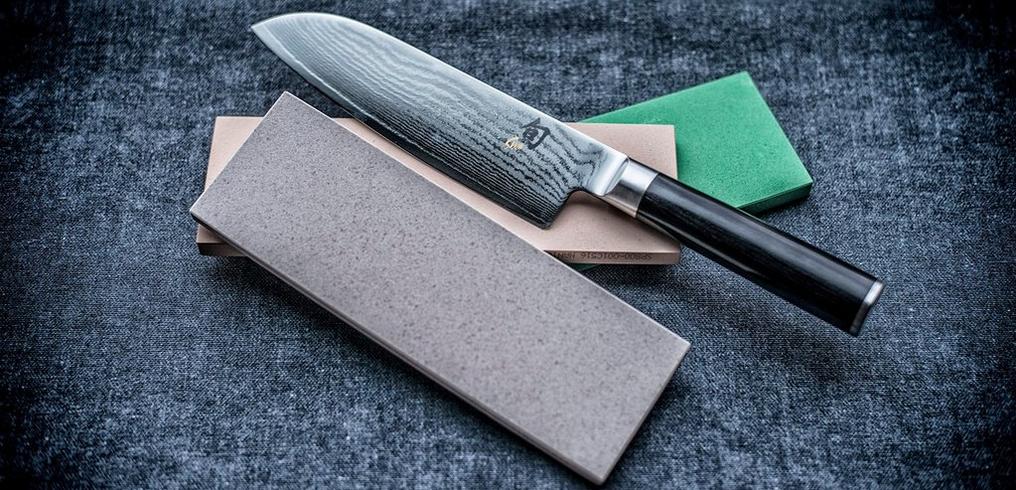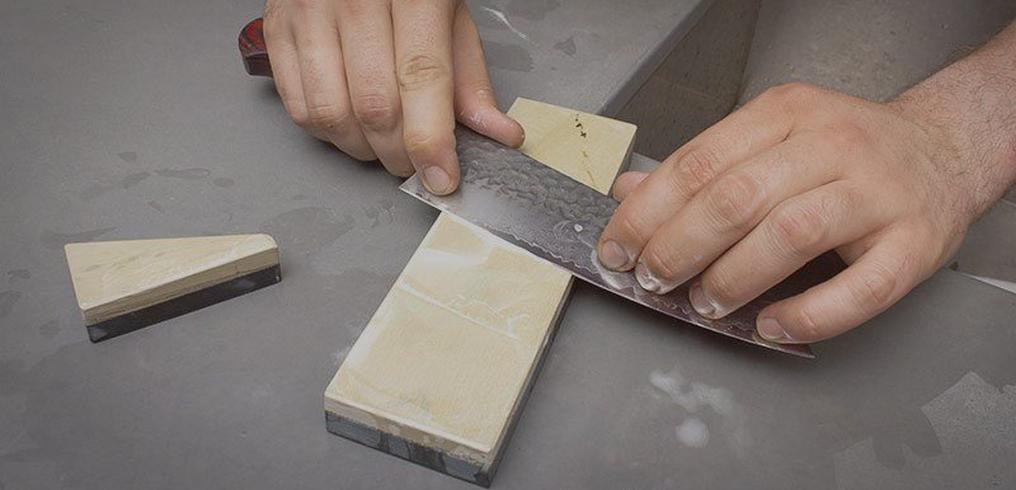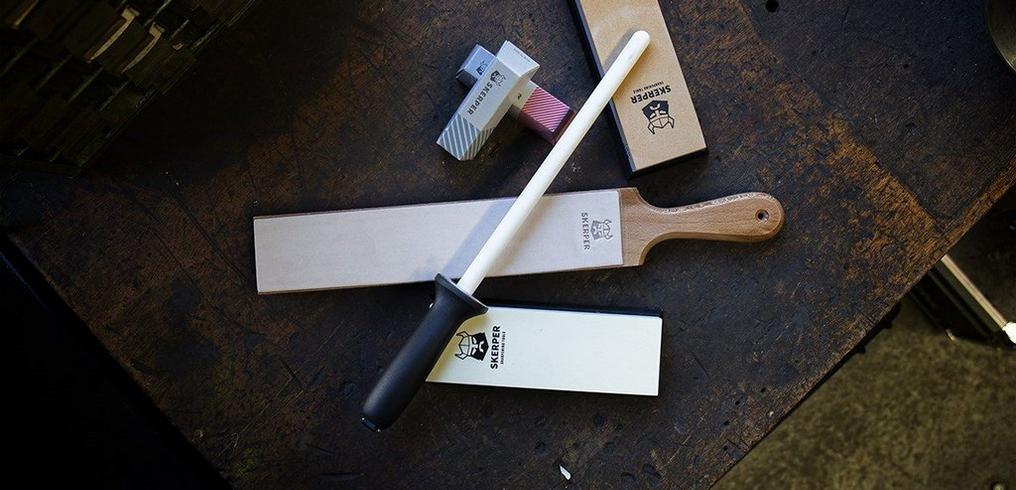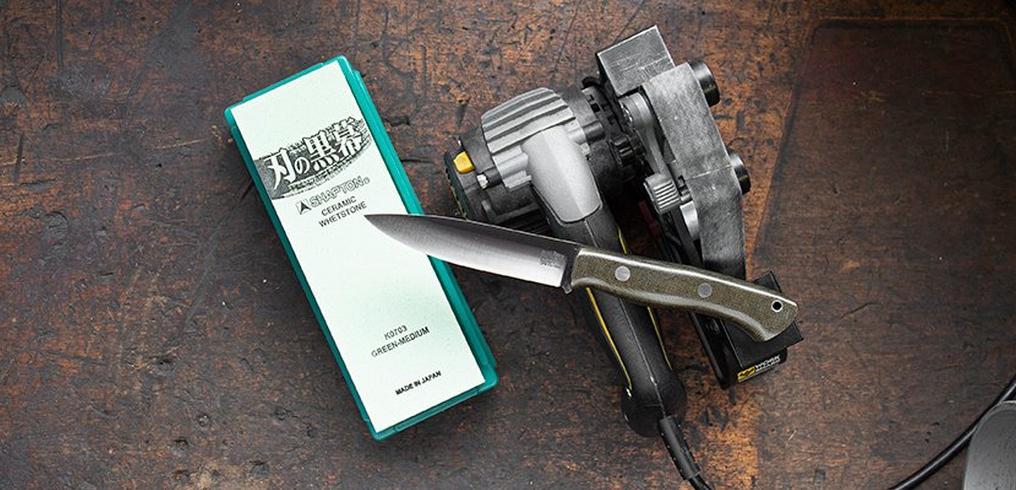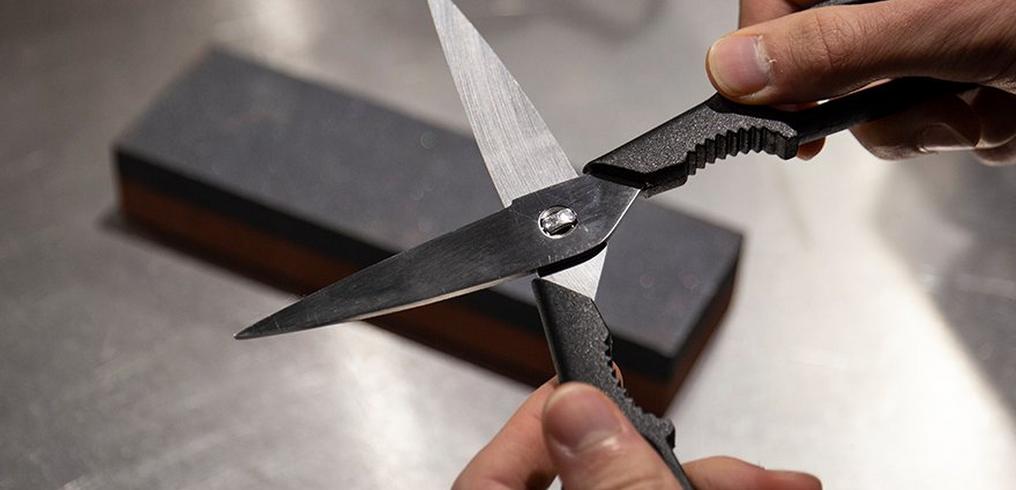Thinning out your knives
If you want to ensure that the cutting performance of your knives remains optimal, you will have to thin out your knives from time to time. Thinning out your knife alters the shape of the blade in such a way that the knife encounters less resistance.
Why is it necessary to thin out your knife?
During the cutting process, 2 things happen:
1: The material that you are cutting is broken by the sharp cutting edge of the knife.
2: When the knife penetrates the object more deeply, the material on either side of the blade is pressed together because, after all, it has to make room for the knife's entry.
To achieve the first point mentioned above, a sharp cutting edge is vital. This can be attained by sharpening the knife to a very fine edge.
Concerning the second point mentioned above, it is important that the blade is thin so that the knife does not have to push aside so much material, which means that it encounters less resistance when penetrating the object. To achieve this, it is necessary to thin out the knife.
When you buy a new knife, you will often find that the edge of the knife is not very thin. That is why it is often useful to thin out the knife yourself. You also need to thin out knives that have already been sharpened several times. Since blades usually taper from the back of the knife to the edge, the more the knife is sharpened, the thicker the cutting side of the knife becomes.
In the diagram above, Fig. 1 shows a typical cross section view of a knife. The blade tapers gradually to the edge, becoming increasingly thinner towards the cutting edge. On the blade, a cutting edge is ground to an angle of approximately 40 degrees.
Fig. 2 shows the cross section view of a knife that has been thinned out. By grinding away a small section of the knife on both sides of the blade, your knife will encounter much less resistance when cutting any object, particularly objects made of hard materials. The angle of the cutting edge remains the same, which means that the knife is virtually as strong as it was before grinding.
As you can see in the diagrams above, the knife is not thinned out along the entire sides of the blade, only along the small areas situated just above the cutting edge.
Ways to thin out a knife:
A relatively large amount of material is removed when thinning out knives. That is why not all sharpening methods are suitable for this. Below, you will find three practical methods that are appropriate for thinning out knives:
1: Using a coarse sharpening stone
You can thin out your knife by sharpening your blade at a smaller angle than usual. After thinning it out, you can polish your knife using a finer sharpening stone to remove the scratches made by the coarse stone and to create a new cutting edge.
The obvious question that now arises is: which grit size should I use to achieve this?
A stone with a grit of up to about 220 can be used for this. A coarse stone (low number) does actually work faster but it also leaves deeper scratches behind. A 220-grit stone may not work very fast the first time you use it. However, it is a good choice for maintaining your knives on a regular basis.
2: Using an electric belt grinder
An electric belt grinder is a good option for thinning out knives. However, such a grinder is not always readily available.
The best grinders are those where you can sharpen your blade on a section of the belt which is located between the rolls. That is because this part of the belt is somewhat flexible, which means that a finer result can be achieved. If you sharpen your blade on the roll, the roll must have a large diameter and preferably be coated with a somewhat flexible finish.
When using electric belt grinders, make sure that you do not allow your knife to overheat. Once the temperature of a knife approaches 200 degrees Celcius, it loses its hardness. This can happen far more quickly than you would expect.
3: Using a slow-turning grinding stone
A slow-turning grinding stone (preferably one which passes through water) is another appliance for thinning out your knife. It is extremely difficult to achieve a good result, particularly if you use the rounded side of the grinding stone. However, if you use the side of the grinding stone, you will find that it is a little easier to attain your goal.
